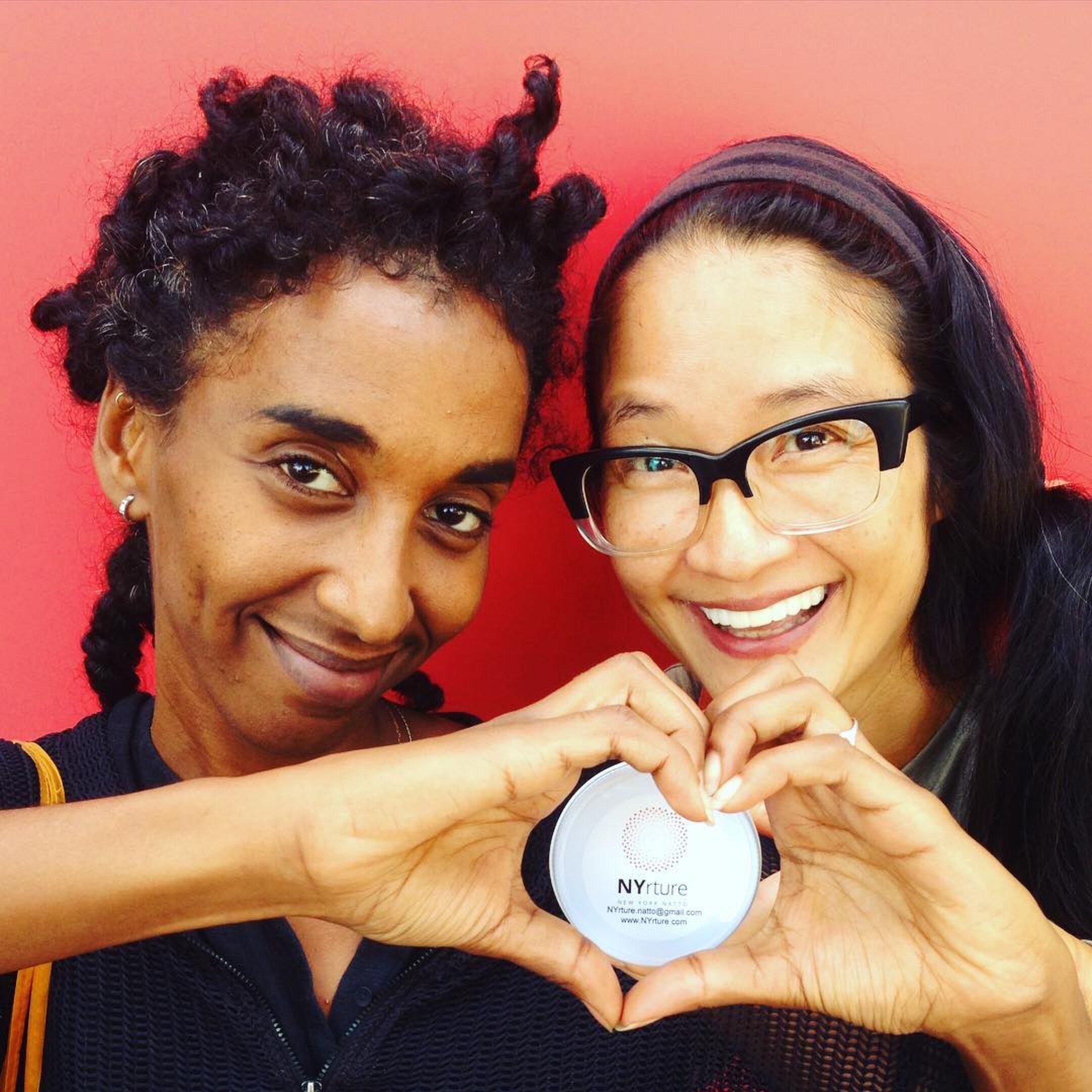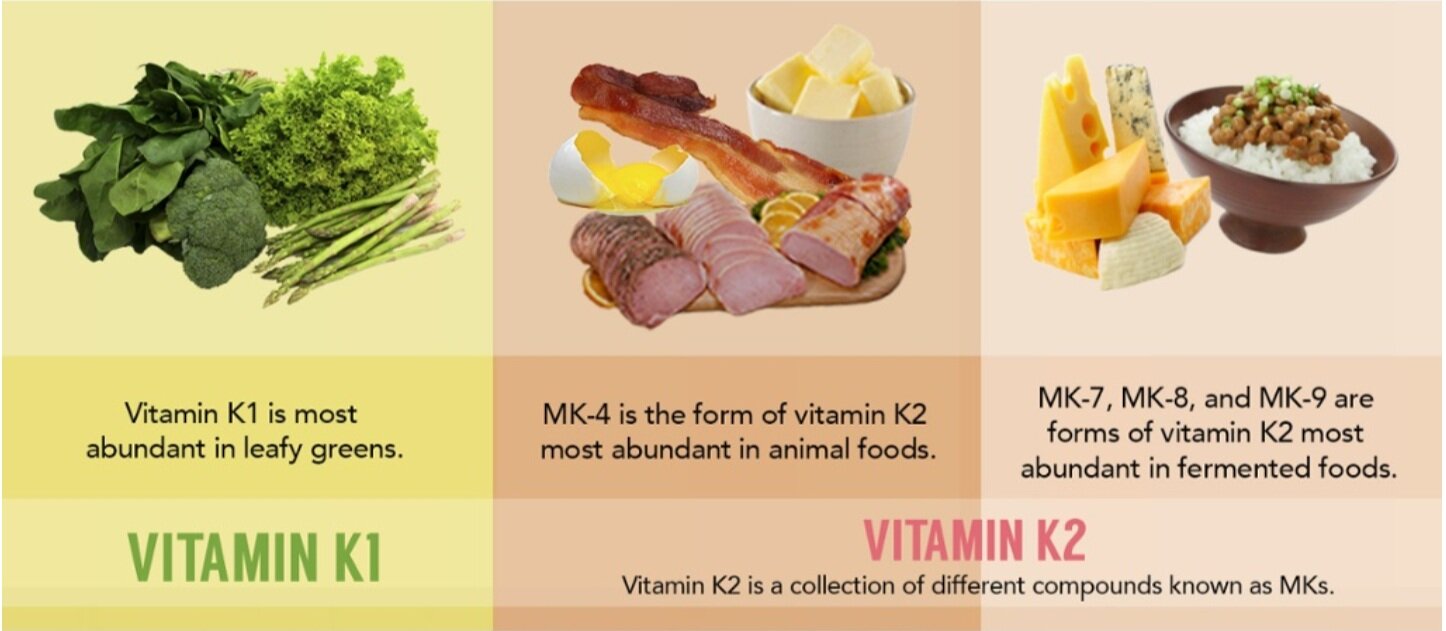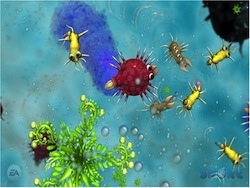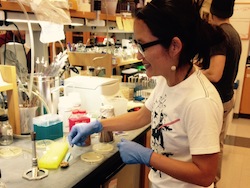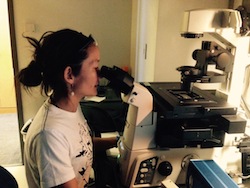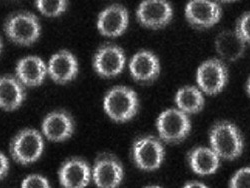The Truth About Natto & Immunity
In the context of this Covid-19 crisis, we want to give you the straight story (not marketing hype) about how natto may help with immunity.
Sales of Natto Soar in Japan Due to Claims It Fights Coronavirus
There’s a natto panic going on now in Japan, where millions are hoarding natto the way we Americans are collecting toilet paper! Natto is flying off the shelves in Japanese grocery stores because of widespread belief that eating natto will provide protection against Covid-19 infection.
(Photo credit: AP)
There are a lot of great reasons to eat natto, but this probably isn’t one of them!
The truth is no one has shown any scientific evidence that natto specifically impacts Covid-19 infection or outcomes. And even if this were true, there has not been enough time to do the science necessary to test the idea. However, natto is well known to protect against many bacterial pathogens, and there are some early hints that natto can help fight some viral infections too!
In this newsletter, we’ll explore what we do know about how natto and the B. subtilis probiotics within it can support your immune health.
Before we dive into the science, here’s a palate-cleansing recipe for those of you staying safe indoors, but ready to celebrate Spring anyway...
This delightful dish puts an Italian spin on Natto with a quick & easy prep!
Now, please serve yourself a dish of natto, and let’s talk about the scientific evidence for its antimicrobial activities …
Natto, Probiotics & Immune Health
Probiotics contain live beneficial microbes that can foster optimal immune function in many ways. Regular intake of probiotics, ideally through fermented foods, maintains the vitality and diversity of our gut microbiome ecosystem. Bacillus subtilis, the natto-fermenting species, is among the “good bacteria” native to the human gut microbiome that help keep us healthy.
We humans are never alone. Each one of us is a complex ecosystem composed mostly of bacteria. Our microbiome, a collective community of microbes living in symbiosis with our own bodies, helps to protect us from opportunistic microbial infections. Benign microbes make their homes all over us – on our skin & hair, in the mouth, nose & airways, but most densely inside our gastrointestinal tract.
“Good” gut bacteria can crowd out the “bad”. Making sure your gut lining is well occupied by beneficial microbes leaves less real estate and resources open for pathogens who might come along and try to settle in. Healthy gut microbial communities can further protect their resources from infection by outside invaders in other ways including: (a) producing anti-microbial (antibiotic, antifungal, antiviral) compounds, (b) generating defensive biofilms as physical barriers and (c) by influencing the activity of our human immune system. Let’s examine the specific ways Bacillus subtilis mounts each of these kinds of defense mechanisms.
Broad Antimicrobial Activities of Bacillus subtilis
Bacillus subtilis turns out to be an unusually broad spectrum probiotic antimicrobial, known to provide symbiotic biological benefits to plants, humans, other animals and bacterial species. B. subtilis produces a wide range of defensive compounds which have been demonstrated to inhibit growth of other kinds of microbes that may cause harm. Natto was even prescribed as a remedy for some gastrointestinal illnesses in the first half of the 20th century—read on for details...
Antibacterial
Bacillus subtilis can dish out many natural antibiotic compounds which inhibit growth of many other microbes, including common pathogenic bacteria like H. pylori, S. aureus, Listeria, E. coli & Salmonella. B. subtilis has long been used as a probiotic added to feed for cattle and poultry raised in the meat industry to protect them against these opportunistic infections as an alternative to using pharmaceutical antibiotics.
In humans, Bacillus subtilis spores have been known as a natural treatment for many gastrointestinal and urinary tract diseases since World War II. This article from Yale University tells the fascinating tale of how German medics discovered that B.subtilis (in camel poop) could prevent and cure dysentery during the war. For decades afterwards, B. subtilis was a commonly prescribed as an anti-diarrheal medication until purified antibiotics became widely available. It may have been the first medically recognized “probiotic”, long before the word was coined.
Certain strains of B. subtilis (not the natto-producing one) are the natural source of Bacitracin, one of the most common over-the-counter topical antibiotic ointments available. (See Bacitracin’s origin story in our Blog archives!)
Antifungal
Bacillus subtilis also produces antifungal molecules which have proven quite important for protecting plants from disease. Bacillus spores are now commonly used as a plant probiotic, providing a natural, organic method of biocontrol of fungal infection in agricultural crops. There appear to be multiple mechanisms by which B. subtilis helps enhance plant growth and inhibit fungal growth. Interestingly, colonization of plant roots with soil-dwelling B. subtilis may also enhance plant resistance to microbial infections, meaning they stimulate the plant’s immune response to pathogen presentation.
Antiviral
Bacillus subtilis also seems to produce antiviral compounds that may interfere with some virus infections. For example, one recent study showed that a novel peptide produced by a B. subtilis strain can inhibit influenza virus infection both in cells (in vitro) and in mice (in vivo).
Of greater relevance to Covid-19, some recent studies intriguing study showed that B. subtilis culture or purified surfactin, a known secreted antimicrobial cyclic lipopeptide, inhibited entry and infection of epithelial cells by two different kinds of coronaviruses (Transmissible Gastroenteritis Virus; TGEV and Porcine Epidemic Diarrhea Virus; PEDV). TGEV and PEDV are coronavirus family members that are presently only known only to affect pigs, causing severe GI distress and high mortality. Like TGEV and PEDV, Covid-19 and SARS-CoV respiratory coronaviruses are believed to have started as animal illnesses, but eventually evolved to become capable of zoonotic spread into human hosts.
Whether surfactin or any other secreted factor from Bacillus subtilis provides protection against any coronavirus in humans is not yet known. Since B. subtilis is ingested orally (as probiotic or in natto), it’s less clear how well secreted factors could directly affect a respiratory infection.
However, some Covid-19 positive patients experience gastrointestinal distress (nausea, vomiting, diarrhea), sometimes without more common respiratory symptoms. This observation suggests that Covid-19 maybe capable of infecting and entering the body through the digestive tract. Scientists have found that Covid-19 and the related SARS virus both use a particular receptor protein (ACE2) as an entryway into the human body. ACE2 protein is very abundant in the lungs where Covid-19 is known to affect the worst damage. ACE2 is also found at high concentrations in the mouth and throughout the digestive tract.
Protective Power of Biofilm (Natto’s Special Sauce)
The unique sticky sauce of natto is a biofilm created in abundance by B. subtilis during fermentation. Biofilms are composed of bacterial communities and the protective sticky matrix they create and embed themselves within. Inside the gut, biofilms may provide a physical barrier function for healthy gut flora (B. subtilis and other beneficial species) against colonization by invasive microbes.
Biofilms may prevent infection and/or improve outcomes of infectious disease in other ways which can both improve the immune system’s activity and reduce inflammatory responses to infections. For example, recent series of published studies suggest that oral ingestion of B. subtilis spores or even introduction of purified biofilm material into the gut could prevent disease and inflammatory responses against an intestinal infection by pathogenic bacteria in mice. On a molecular level, treatment with B. subtilis probiotic or even its purified biofilm stimulated immune (M2) macrophages, inhibiting T-cell activation and cytokine production which cause the inflammatory responses that lead to disease symptoms.
While the study of how probiotics modulate immunity has naturally focused on gastrointestinal diseases, their utility may also extend to other inflammatory diseases in different parts of the body, such as respiratory disorders characterized by severe inflammation like Covid-19 virus.
In fact, Bacillus biofilm material has been shown to stimulate protective immune responses to H1N1 influenza viral infection. Bacillus subtilis natto biofilms are composed almost entirely of glutamic acid polymers (γ-PGA). An intriguing 2015 study in mice showed that intranasal application of purified γ-PGA after infection with H1NI flu virus increased production of protective antibodies and cytokines, stimulated immune cell activity and improved animal recovery and survival rates.
One more study worth mentioning here showed a 55% lower frequency of respiratory infections associated with oral ingestion of Bacillus subtilis in an elderly population. A healthy, free-living older population (60-74y) was divided into two groups and given either probiotic or placebo. B. subtilis treatment stimulated immune antibody (IgA) production and was associated with lower incidence of common infectious disease, particular respiratory infections.
Covid-19 is (primarily) a respiratory viral infection with a mortality rate that appears to scale with age. The authors of the above paper suggest Bacillus subtilis supplementation may be a safe and effective way of stimulating immune responsiveness against common infectious illness in elderly people. Notably, the doses of B. subtilis used in this study (2 billion CFU) were much (10-50x) lower than the amounts found in a single serving of fresh, unfrozen natto.
Take-Home Message:
We just don’t know if eating natto has any protective effect on novel coronavirus.
But we do know the probiotic agent in natto, Bacillus subtilis is known to produce many antimicrobial compounds and can prevent or combat a variety of enteric infections in animals and humans. Some preliminary science suggests that B. subtilis and its biofilm can modulate immune system function in ways that can either prevent infections or improve outcomes by reducing inflammation.
As you shelter in, eating wisely to support your general health is also a top priority. Natto is a terrific thing to have in your fridge not only because it is probiotic but because it is clean, whole, nutrient-dense nourishment.
It’s also a versatile, ready-to-eat meal game changer. So please stay safe, be well and maybe enjoy a little more natto!










